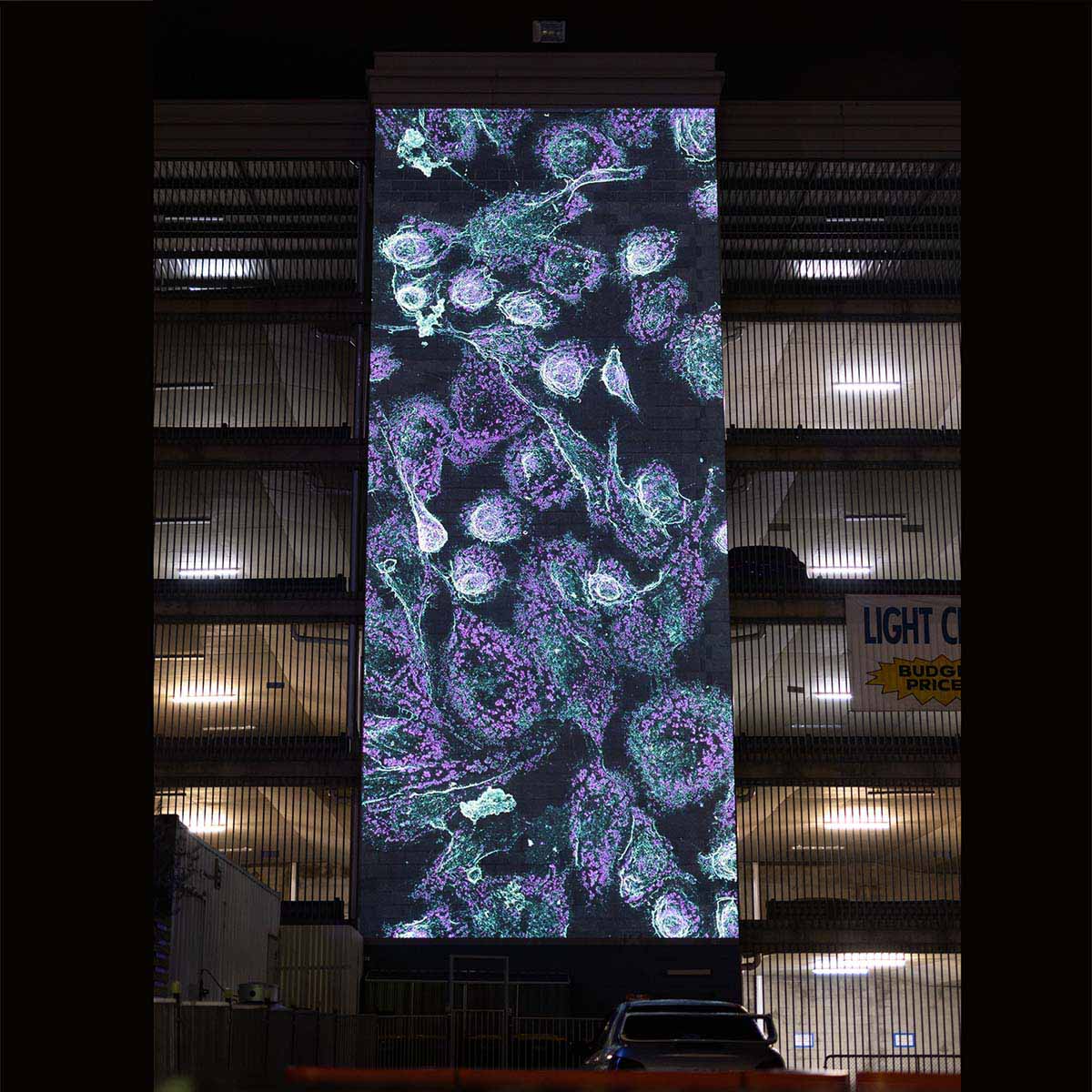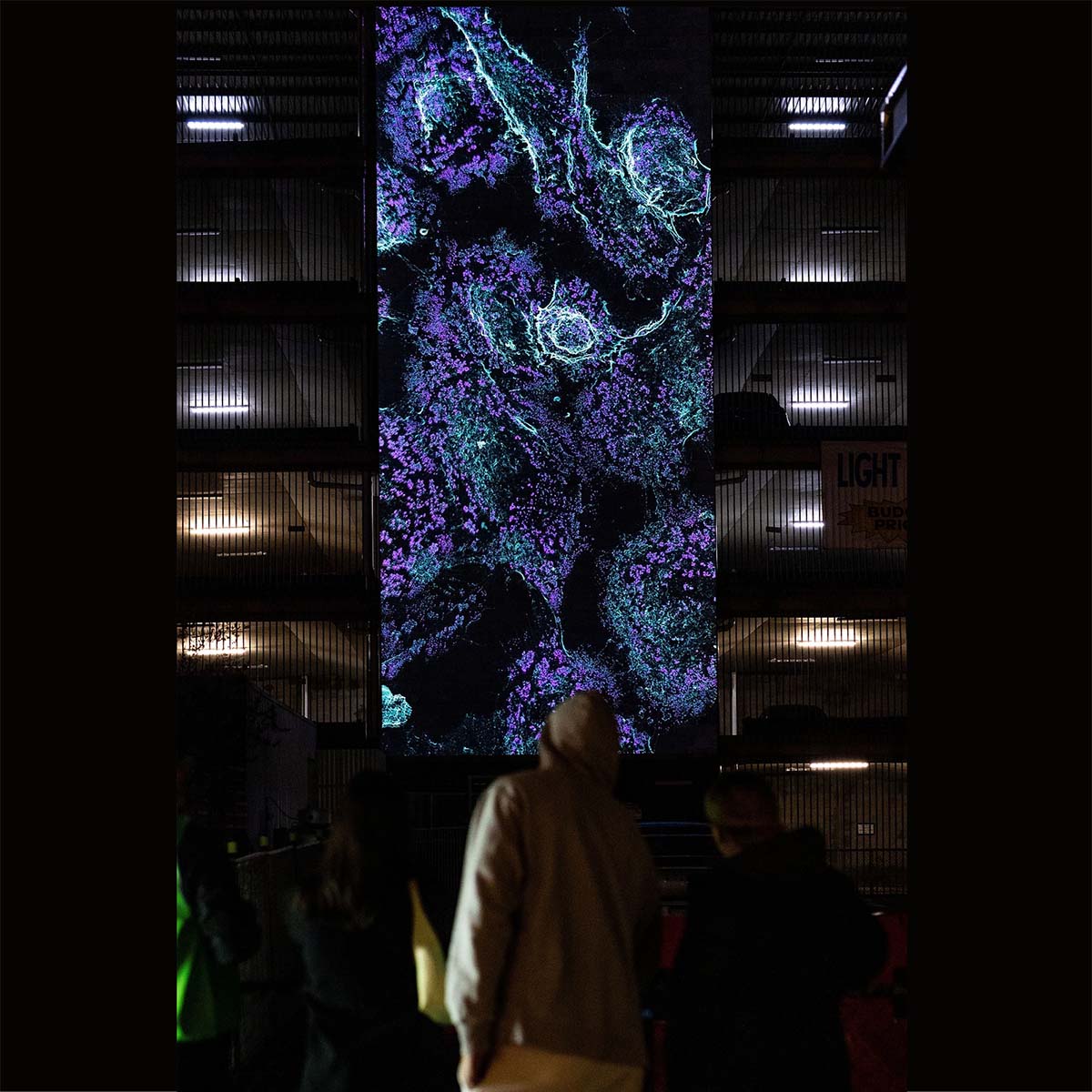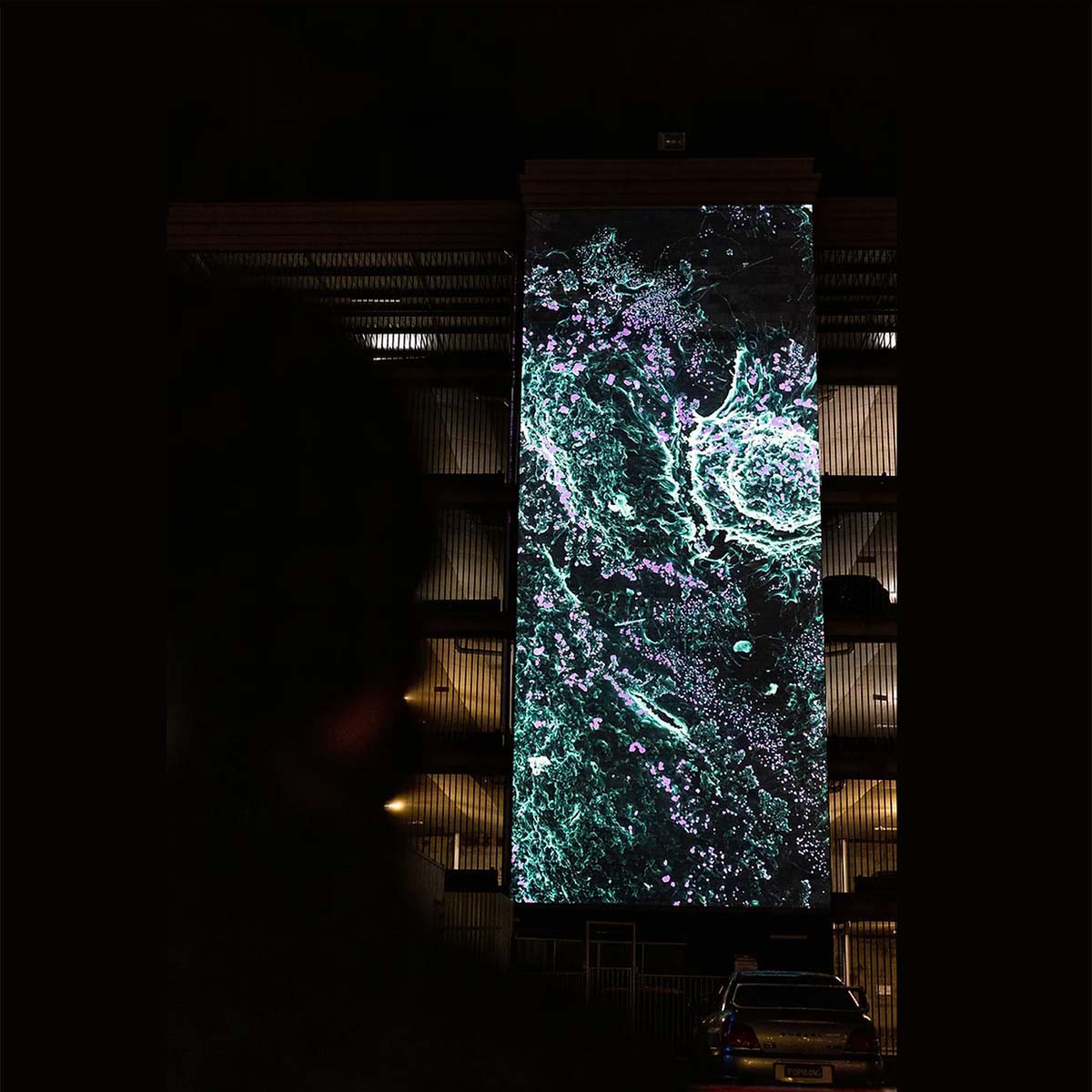the society of nanoBioSensing
2019 – 2022
video credit: Andrea Rassell
photo credits: Frankie the Creative, Illuminate Adelaide
In the context of perceptual experience, the nanoscale is a problematic space. Instead of encountering stimuli that the human senses have evolved to perceive, we instead find extreme dynamism, unfamiliar physical forces, and light waves that are too small for even our most sensitive optical systems to detect.
Scientific instrumentation has an interpretative and translational role in making nanoscale phenomena and nano-materials intelligible for humans. These scientific instruments, unlike analogue instruments, often relegate the human body to a role of mouse-clicking rather than creating an embodied sensory engagement with the world.
Without such physical or visual perceptual experiences available to us, the philosopher Alfred Nordmann suggests that nanotechnologies might ‘become more unfathomable when we are asked to imagine their unimaginably intricate workings that lie beyond the reach of our senses.’
The Society of NanoBioSensing is a six-story gesture-responsive projection that enables the viewer to explore scanning electron microscope images of ZIF-8, an engineered nanomaterial on prostate tumor cells. These particles absorb into the cell surface and deliver genetic therapies into the cytoplasm of the cells.
The innovative aspect of this work is that, given the sheer scale of the original image, the viewer can use movement and gesture to navigate the image and zoom in from a collection of cells to see the cell surface and the nanoparticles on the surface — all in superb resolution and in an embodied manner.
Conceived during an ANAT Synapse residency, in collaboration with the Ian Potter NanoBioSensing Facility at RMIT University, and generously funded by ANAT, Illuminate Adelaide and the City of Melbourne.



